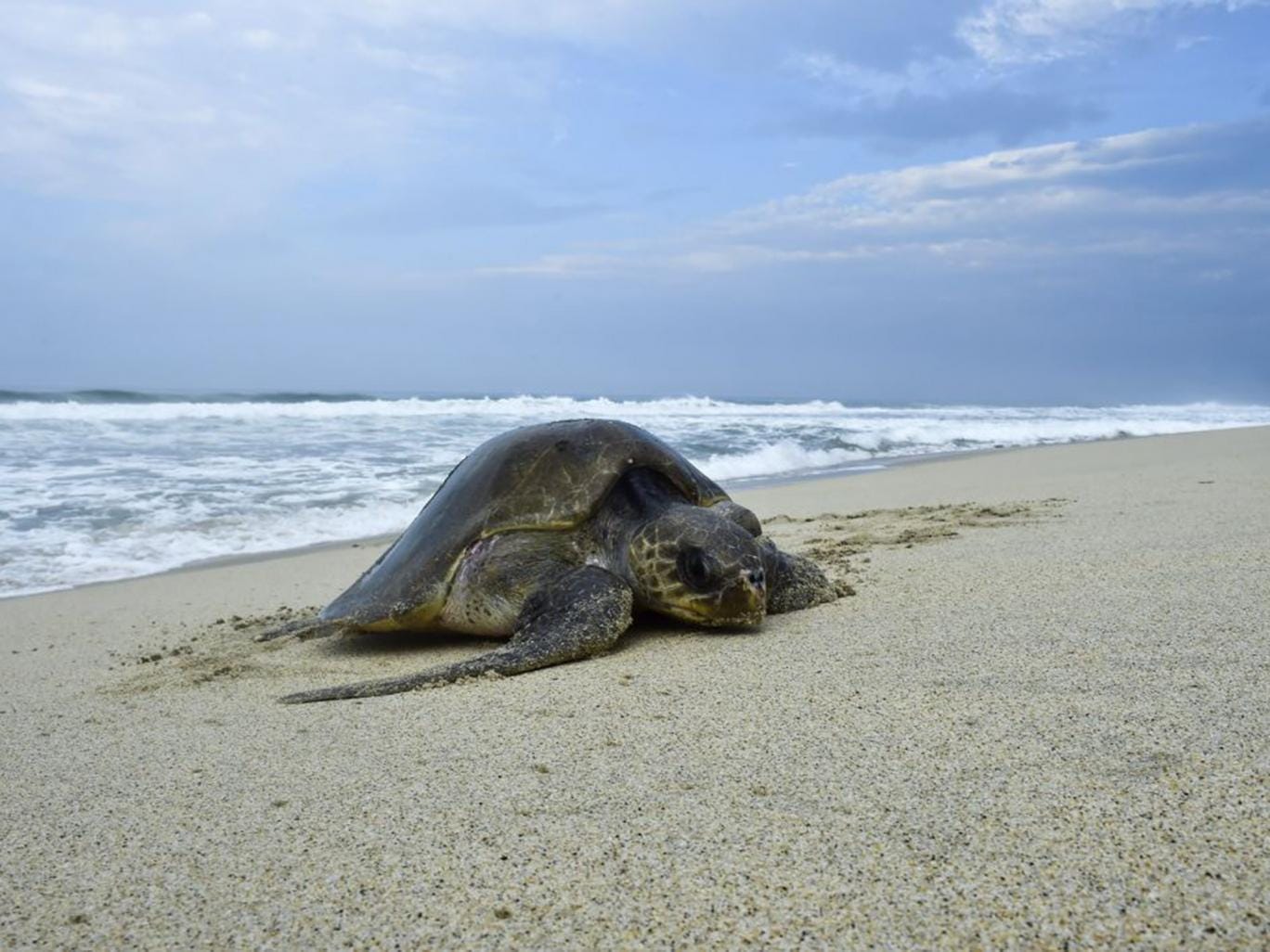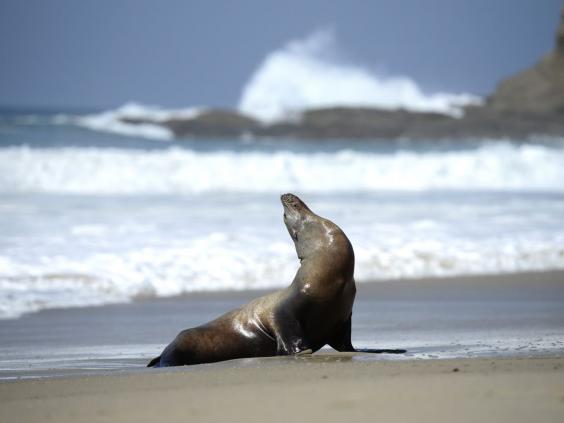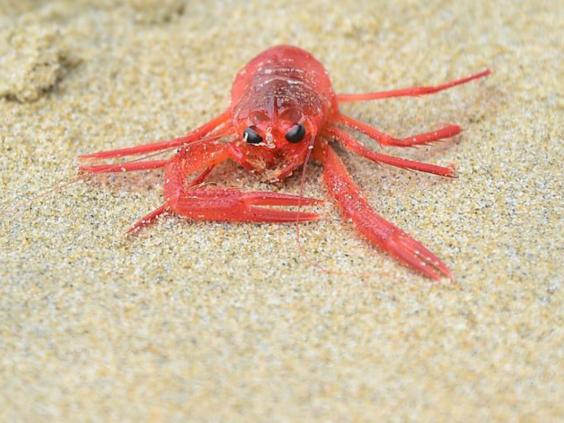
It was early in the afternoon when Dan Maloon, a 34-year-old knife-sharpener from central California, saw what he thought was a white plastic bag floating in the San Joaquin River where he was fishing.
“It caught my attention because the current was flowing the other way,” he said. As the plastic bag drew closer, Mr Maloon began to make out a pair of flippers, propelling it through the water – which is when he realised that it wasn’t a bag at all, but a sea turtle. “That is something you just don’t see unless you are in Hawaii or watching Animal Planet,” he told the Modesto Bee.
The turtle was around 80 miles from the ocean, and more than 1,000 miles from its traditional habitat halfway down the Mexican west coast. Yet that unexpected encounter a week ago was just one of a spate of recent sightings of unlikely creatures in California waters, drawn north by high ocean temperatures.
Last month, a highly venomous, yellow-bellied sea snake was spotted by a surfer on a beach in Ventura County, north of Los Angeles. The snake, aka Pelamis platura, has never been known to venture so far from the Tropics, and is only the second of its species ever found in California. It was added to the collection at LA county’s Natural History Museum (NHM).
The most obvious explanation for the arrival of these unexpected guests is el Niño, the warming of the Pacific that occurs every five years on average, bringing adverse weather to the Pacific Rim and beyond. This year’s so-called “Godzilla el Niño”, combined with the effects of climate change, is expected to be the most dramatic on record.
Already, el Niño is being blamed for the vast forest fires that have blanketed much of Indonesia in choking haze, and for weak Indian monsoon rains that have led to food shortages in the subcontinent. In a statement this week, Michel Jarraud, the secretary-general of the World Meteorological Organisation, said the 2015 el Niño “is playing out in uncharted territory.”
Mr Jarraud went on: “Our planet has altered dramatically because of climate change, the general trend towards a warmer global ocean, the loss of Arctic sea ice and of over a million square kilometres of summer snow cover in the northern hemisphere. So this naturally occurring el Niño event and climate change may interact and modify each other in ways which we have never before experienced.”
California is expected to face severe storms during the coming winter, which it is hoped will alleviate the region’s long-running drought. But the state’s el Niño symptoms also include the recent rash of strange sea-life. In September, a red-footed booby was found on the pier at Redondo Beach. The tropical seabird typically breeds in Hawaii and the Galapagos Islands.
In August a diver was attacked by a hammerhead shark off the coast of San Diego. Though sharks are often spotted in California during the summer months, their numbers have been abnormally large this year.
The same goes for the increased numbers of sport-fish – including yellowfin tuna, blue-striped marlin and wahoo – which are being caught off the coast of southern California this year. And over the summer the beaches of San Diego and Orange County were smothered in thousands of tiny, bright red tuna crabs, which washed ashore hundreds of miles north of their native Baja habitat.
The phenomenon has not been a boon for every species: in 2015 a record number of seal pups were abandoned by their mothers as the warming of the Pacific pushes their food sources further from the California coast. Some seabirds are also reported to be dying at an unprecedented rate, as the fish they would normally catch near the surface dive deeper to reach cooler waters.
“The food chain is all messed up,” said Rick Feeney, Ichthyology collections manager at the NHM. “All the cold water fishes that normally live here are probably moving north or moving offshore, where it’s cooler. The schools of anchovies and sardines have moved and so the seals are having problems feeding and a lot of their pups are dying.”
There have been strong el Niños in the recent past, specifically in 1997 and 1998. “A lot of these fishes appeared at that time, too,” Mr Feeney said. “It’s a normal trend. But the fear we have is that global warming may mean that the water never goes back to its normal temperature.”










